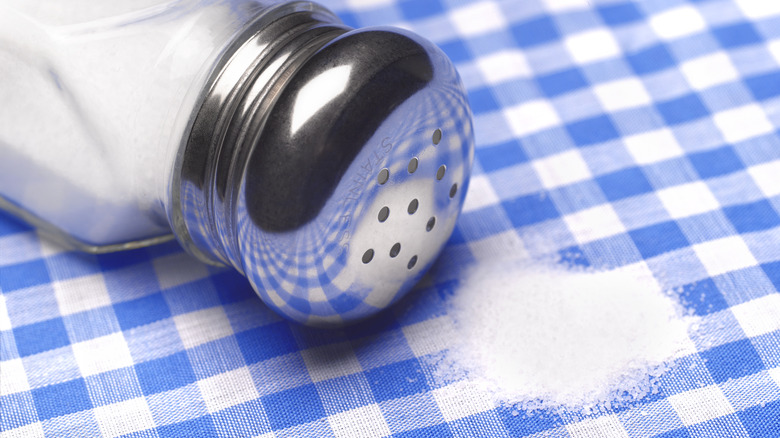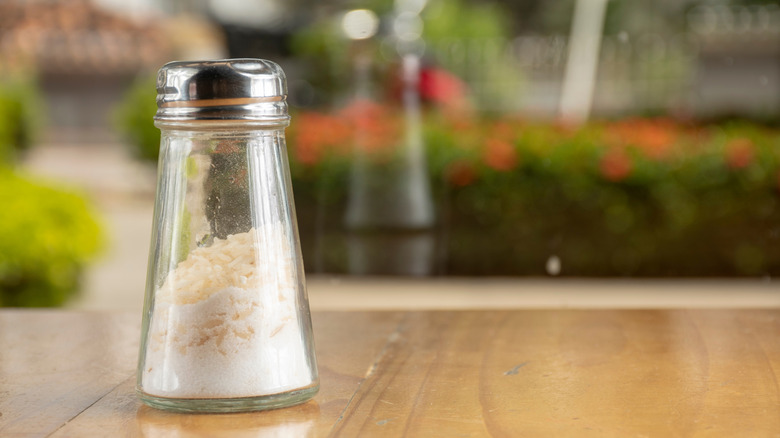Why Do Some Restaurants Put Rice In Their Salt Shakers?
Although some say we may be eating too much salt, it's hard not to reach for the shaker when dining out. Whether it's to sprinkle on fries or because the dish could use a little extra flavor, that tiny container seems to be a constant item on restaurant tables. However, have you ever looked at them and thought, what's actually in salt shakers? Sometimes, the salt looks a little off — discolored or grainy — but the bizarre texture you're seeing is actually helping you get the perfect pinch of salt for your meal. Restaurants often add rice to their salt shakers to prevent the salt from clumping.
Salt, being highly absorbent due to its moisture-loving properties, can easily clump up when exposed to water. For example, after a quick rinse, leftover water droplets inside the shaker could cause the salt to form those pesky clumps, blocking the tiny holes at the top. Rice, however, comes to the rescue. It soaks up any moisture that might cause clumping, allowing the salt to flow freely. Salt dissolves when introduced to water, but rice is a starch, so it's able to hold larger amounts of water, making rice the perfect companion for salt. With a clump-free salt shaker, you won't have to worry about accidentally over-salting your food from shaking it too many times out of frustration.
Simple replacements for rice in salt shakers
While rice is the go-to solution for salt shakers, not all grains are made for your shaker. You've probably noticed white rice more often than brown in restaurant salt containers. That's because white rice has the outer layer of bran removed, allowing moisture to more easily access the starch and be absorbed. This makes it the ideal rice for a shaker, but don't worry if your local diner doesn't use white rice — using other absorbent starches like pasta, dried beans, or even coffee beans work just as well. If you've got rice, but it's not white, long or short-grain rice will do the trick as both absorb water efficiently.
The next time you're at a restaurant or restocking your own salt shaker, keep in mind that proper maintenance matters, too. The outside of the shaker should be cleaned regularly, ideally once a week, since it can pick up food residue and germs from frequent handling. As for the inside — a thorough cleaning every few months should suffice. So, the next time you're seasoning your food, take a moment to appreciate the rice, keeping your salt shaker clump-free and your meal perfectly salted.

